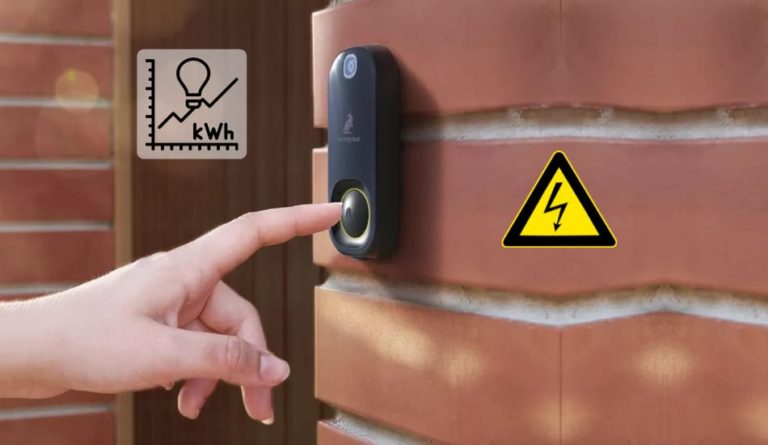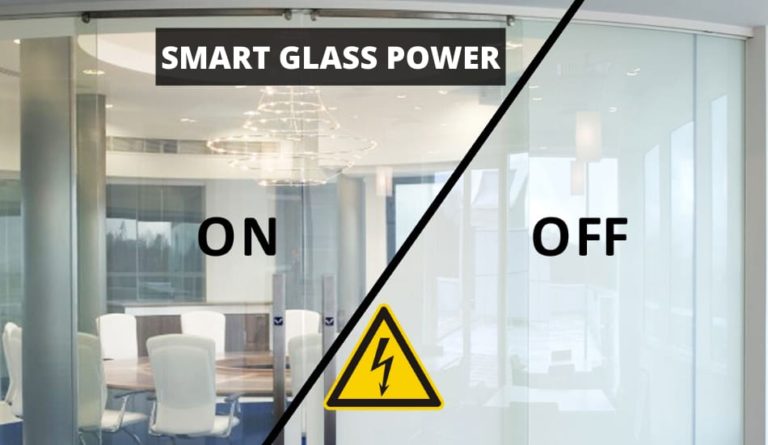How Much Electricity (Power) Does a TV Use?
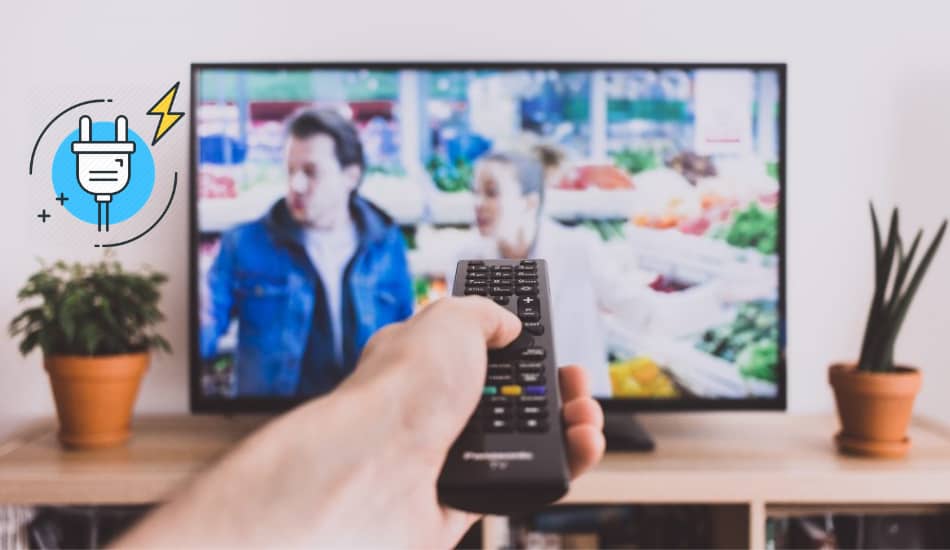
Today, we have a TV in almost every house and apartment. Often, a house is equipped with several TVs at once. Energy consumption is growing along with the number of household appliances, and at the same time, technology keeps improving.
Today, we have ultra-high-definition TVs, which consume much more electricity than the older models. But how do you find out how much energy your TV actually consumes and how much it affects your bill? Let’s find out.
Table of Contents
How Much Electricity (Power) Does a TV Use?
So, How Much Electricity (Power) Does a TV Use? Most TVs, on average, use between 80 and 400 watts when turned on, but that also depends on the size and technology. Using a sample cost of 23¢ per kilowatt-hour and watching time of five hours daily, we get around $0.23 per day or $3.21 to $10.13 per month.
Remember that TV uses only a small fraction of the energy, unlike other devices in your home such as heating, cooling, and lighting systems. So you shouldn’t worry too much about how much energy your TV actually consumes. We can say that TV only consumes 5% of your home electricity bill. The best and easiest way to save power consumption with your TV is to turn it off.
If you are interested in buying a new TV model, check SAMSUNG 65-Inch Class QLED here on Amazon.
Electricity Usage by TV Type
| Size | LCD | Plasma | LED |
|---|---|---|---|
| 30 inches | 60 watts | 150 watts | 50 watts |
| 42 inches | 120 watts | 220 watts | 80 watts |
| 50 inches | 150 watts | 300 watts | 100 watts |
The newer TVs consume a lot more energy (power) than previous models. This is because they are bigger than the old ones and have larger screens. LCDs are way more efficient, unlike old CRTs.
Related Article: How Much Electricity Does a PS4 Use
How Much Electricity Does a TV Use per Hour?
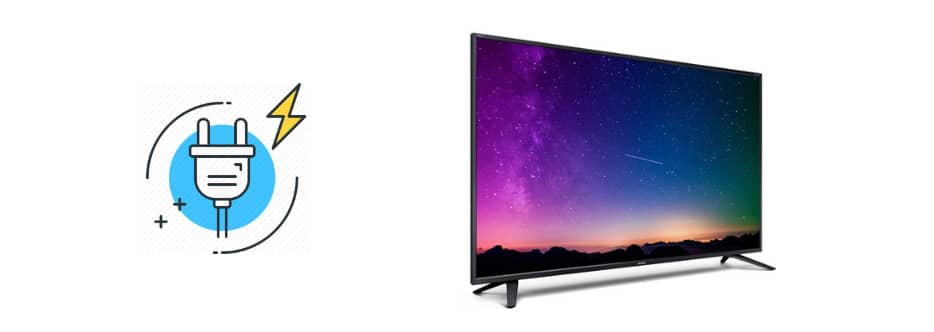
Almost every TV has a label on the back that says how much energy it actually uses. The wattage number is marked with “W” at the end. You only need to multiply the wattage number by the hours you watch your TV daily. You will then get watt-hours. By dividing that number by 1,000, you will get kilowatt-hours. Keep in mind that every state has a different kWh energy price.
Example: If your TV consumes 200 watts, and you watch your TV for 4 hours per day, your electricity rate is 20 cents per kWh:
- 200 W x 4 hours = 800 Wh
- 800 Wh / 1000 = 0.8 kWh
- 0.8 kWh x $0.20 = $0.16 per day
Using this formula, watching television will cost you only 16 cents per day, or $59.20 per year.
Here is a table that shows how many watts different TV models use in a year:
| TV Wattage | Hours Per Year Run | Yearly K Wh Of Electricity |
|---|---|---|
| 50 W | 1,095 | 54.75 kWh |
| 75 W | 1,095 | 82.13 kWh |
| 100 W | 1,095 | 109.5 kWh |
| 125 W | 1,095 | 136.9 kWh |
| 150 W | 1,095 | 164.3 kWh |
| 175 W | 1,095 | 191.6 kWh |
| 200 W | 1,095 | 219 kWh |
Related Article: How Much Electricity Does a Computer Use in Sleep Mode?
What Determines Your TV’s Energy Consumption
The users who run their TVs much more frequently usually have higher energy bills. This is because they leave their TVs running for their pets or they leave it ON while they are doing other things. Therefore, you need to carefully choose all the important key factors and that affect your TV’s energy consumption.
These are the main factors that determine how much power a TV will use:
- Age: If you didn’t know, the older models require up to 400 watts or more, which is twice the normal TV’s.
- Size: The size of the TV is the second biggest factor determining power consumption. The most efficient TVs on the market use much less power. Some LED models use 15 watts for a 15-inch TV.
- Screen Type: A good thing to keep in mind is that LCD screens have almost the same power consumption as LEDs, while Plasma and CRT screens typically consume 3 times more energy.
What Affects Energy Consumption
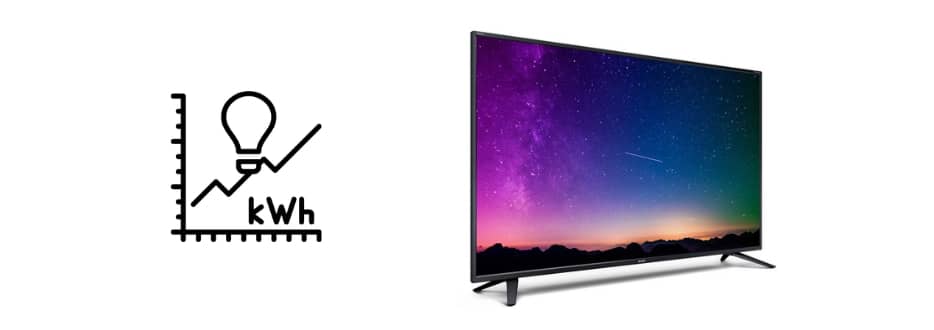
The size of the screen is the main parameter that affects the energy consumption of any TV. The larger the diagonal, the more power your TV will consume. For example, a modern LED TV with a diagonal of 43 inches spends about 18 watts per hour in working order.
But this is not the only factor affecting the power consumption of a TV. Other parameters include:
- Chroma, white and black balance, brightness;
- Opening hours during the day, week;
- Duration of stay in sleep mode.
Important. Do not forget that all TVs go into standby mode. These are the moments when the TV itself is turned off but plugged into the network (outlet). In this state, he continues to consume electricity, although much less than during work. The average consumption of LCD TV in this state is 0.5 W per hour.
For those who want to save money, it is recommended to turn off all household appliances from the outlet during the absence of all house residents or at night. Such savings will be noticeable only within the framework of the half-year. Additionally, this step protects the TV from thunderstorms and sudden power surges.
How to Check Your TV’s Power Consumption
The best way to check the TV’s power consumption is to look at the technical data sheet of your TV. Manufacturers provide information on how much electricity each TV model consumes at maximum load.
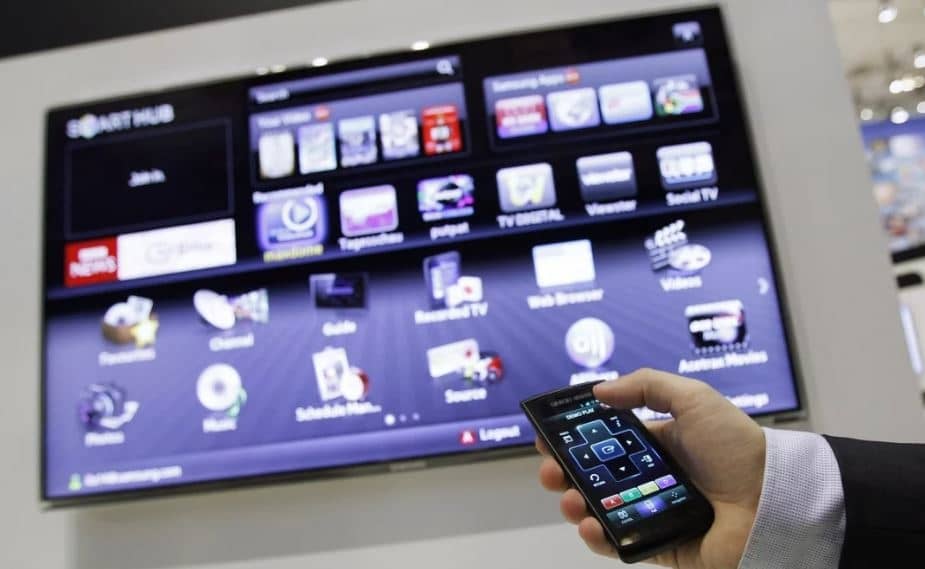
If the instructions are no longer at hand, but you want to know the power consumption of the TV, you can do the following:
- Purchase a special tool for measuring power – a wattmeter. It shows the result instantly.
- Carry out a calculation according to the formula, in which you need to consider the device’s type and technical characteristics.
- Turn off all appliances in the house except the TV. Take a stopwatch. And detect how much the electricity meter will wind up in a minute.
If you want to learn more about the power consumption of a TV, check this YouTube video:
Note! Many manufacturers duplicate TV passports on the official website. It is enough to enter the exact name of the model. You can recognize it by the plate fixed on the back panel, or the sticker located there.
Average Calculations For Different Types of TVs
On average, a family watches TV for 5 hours a day. That is around 150 hours per month. By this average amount, you can multiply the TV’s electricity consumption per hour. To determine this parameter, it is necessary to consider the matrix type and the TV model. So, let’s review the most common TV models on the market.
1. Cathode-ray Tube Models
These are TVs, familiar to everyone from childhood. The only advantage of this TV is its durability. Moreover, the quality of the image does not deteriorated over the years. One drawback is that it is already difficult to fix such outdated models. More often than not, you have to buy a new flat TV when the device fails.
The power of cathode-ray tube TVs in W is 60 to 100 watts per hour. On average, that TV consumes 0.5 kW per day. Monthly consumption is around 15 kW. In standby (powered on), it uses 2 to 3 watts per hour. We add up all the amounts – for a month from 16.44 to 17.16 kW per month.
2. LCD or LED TVs
How much electricity a liquid crystal TV consumes depends on the diagonal of that TV. The middle model has a parameter of 32 inches. This type of TV consumes from 40 to 55 watts per hour when it is turned on, and the only 1W in sleep mode.
Simple calculations show that 6.72 kW – 8.97 kW per month is used to run one LCD TV with a diagonal of 32 inches.
LED panels consume 40% less electricity on average. In sleep mode – only 0.3 watts. Even a large 49-inch TV consumes only 100-150 watts per hour. As a result, a month of viewing such equipment will consume from 15.22 to 22.72 kW.
Important. Exact figures can only be calculated from the technical characteristics of the TV.
3. Plasma TV
Plasma TVs have an average electricity consumption per hour. They cannot be classified as a high-energy efficiency class. A high-quality picture requires a lot of electricity.
For example, a modern panel with a diagonal of 42 inches in operation consumes from 150 to 190 watts per hour, while during the sleep mode only 0.5 W. As a result, such equipment consumes from 24.36 to 28.86 kW per month.
Important! Manufacturers in the datasheet indicate the minimum amount of energy consumed under heavy load. However, one movie may require higher contrast and brightness than static news. And the electricity consumption during these loads will be different.
What is Energy Efficiency Class
Televisions are household appliances that are often used like refrigerators and washing machines. Therefore, buying your new TV is not worth saving on the energy efficiency class. When evaluating this parameter, you don’t use only the maximum load but also the power consumption in the device’s sleep mode.
This indicator also affects the number of external media allowed for connection. After all, each of them increases the power of the TV. And the lower it is, the more flash drives, tuners, and players you can connect.
Since 2010, an international classification of power consumption classes for plasma and liquid crystal TVs has been in effect:
- A +
- A ++
- A +++
The more pluses near the letter, the less electricity the TV consumes. The last class appeared only in 2020. And on very old models, you can see the designations B, C, D, E, F, G.
The most common classes for TVs are A+ and A. The first option includes the popular Sony TV model KDL-40W705C. Its power consumption is 48 W in the on mode per hour. The diagonal of the model is 40 inches. The supported Resolution is Full HD, while the screen type is a liquid crystal.
Related Article: How Much Electricity Does a Mini Fridge Use
3 TV Models With Low Electricity Consumption
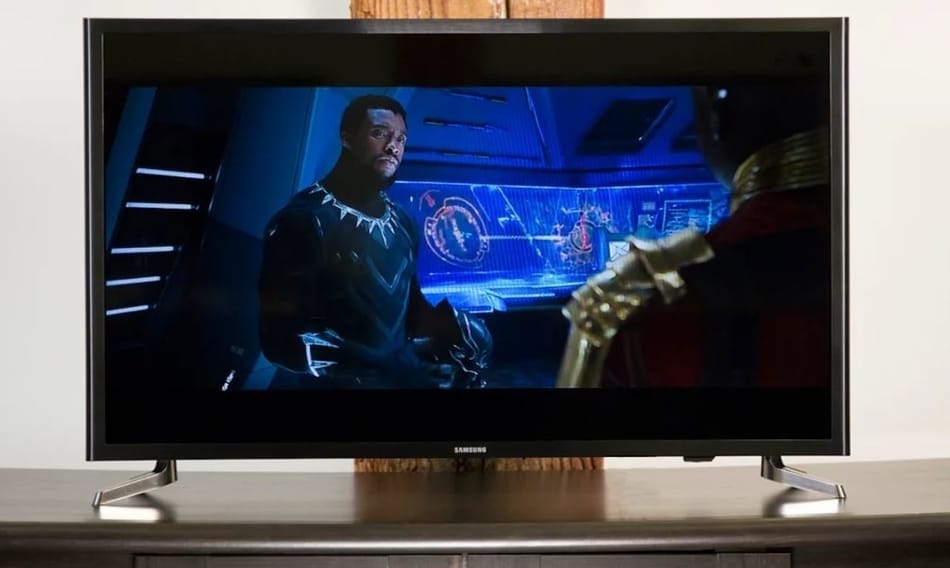
A high price distinguishes TVs with A +++ class and is still poorly represented on the market. Therefore, models with the A ++ indicator are most often purchased. The most popular of them are:
- LG 55LH6407 is an energy-efficient model with a consumption of only 55 watts. Annual energy consumption at average load 77 kW. The screen diagonal is 55 inches. The TV supports modern Full HD and Smart TV standards.
- Samsung UE49M6302 with a diagonal of 49 inches, consumes only 62 watts per hour. With an average load per year, 92 kW is spent on servicing such equipment.
- Philips 49PUS6101 is the new 4K TV. At the same time, its energy consumption is only 66 W per hour.
Users have already tested each of these models. Despite the high technical characteristics, the energy costs are really low.
How to Save Electricity With Your TV
To save electricity on TV, it is enough to follow simple tips and recommendations:
- Choosing a TV installation location. It is advisable to install your TV in a lighted room, and by that way, you will save on TV brightness. To do this, just go to the settings via the remote control and reduce the desired parameter to the optimal indicator.
- Unplug the device from the socket. Standby or Sleep Mode – The device is plugged in but physically turned off. The technique also consumes electricity during this period, although not in such large quantities. You can save up to 5 watts by this tip.
- Turn ON Eco mode in modern TVs (energy-saving mode). To enable it, you need to go to the settings and select the desired operating mode.
- Set the shutdown timer. Many users fall asleep while watching TV. To prevent the TV from working all night later, you need to set a timer. It is provided in almost all TVs, even cinema ones.
- Modern TVs are equipped with a built-in presence sensor. It is enough to turn it on so that the device turns itself off when there is no one in the room for a long time. Very useful for those who may forget to turn off the equipment before going to work.
- Get an Energy Star model. When you are buying a new TV, it is advisable to choose A + or higher. This will significantly reduce the overall cost of home theater maintenance. Energy Star models will consume about 30% less energy than other models. New A +++ models are expensive. It is advisable to buy them if the equipment works around the clock. In other cases, option A ++ or A + is sufficient.
- Avoid plasma TVs. If you didn’t know, plasma TVs consume more energy than other flat-screen models. It is best to use OLEDs; they are more energy-efficient.
Important. Remember to unplug peripheral devices from the TV that are connected via USB or other connectors. At the moment of switching on, they are powered by TV and increase electricity consumption.
All you have to do is follow these tips to experience a reduction in your monthly electricity bills. Tips for turning off the network apply to all household appliances that can be turned off at night: computers, washing machines, phone chargers, table lamps, and microwave ovens.
Standby Power (Vampire Power) of TV’s
Most modern and new TVs don’t have a standby power consumption problem. Standby power used to be a much bigger problem than it is today. Most TV manufacturers have corrected this shortcoming that occurred with overwhelming, and after 2006, TVs drew less power in standby mode.
Today, TVs consume less than 1 watt of power on standby. That’s around 11 cents per month. Today, you can easily solve this problem by using a power strip to turn off many devices simultaneously. You can find them in almost every electrical store for $4.
FAQ: People Also Ask
What’s the best time to run a TV?
Under a time-of-use (TOU) rate plan, electricity costs vary at different times of the day. Running appliances during “off-peak” hours, often at night, is more cost-effective.
How many solar panels does it take to run a TV?
Typical TVs consume electricity ranging from 50 to 200 W. Considering that a standard solar panel has a rating of about 350 W, a single solar panel should suffice to power a TV.
Final Thoughts
A TV’s power usage varies based on design, dimensions, and technology attributes. Modern energy-saving TVs like LED and OLED use considerably less power than their CRT and Plasma predecessors.
While larger screens consume more energy, leveraging power-saving modes, tweaking settings, and considering portable power stations can mitigate energy consumption. Being mindful of wattage saves money and minimizes our environmental impact – a beneficial scenario for all.


